We all know Nike—it’s one of the biggest brands in the world. But did you know the founder of Nike was NOT some billionaire investor, but just a kid who loved running? A kid with ZERO business experience named Phil Knight.
When Phil started, he was selling shoes from the back of his car! But today, sports icons like Michael Jordon and Tiger Woods proudly wear Nike shoes. And so do hundreds of millions of other customers. In fact, you probably have a pair of Nikes in your closet right now!
Phil wrote Shoe Dog to share with us how he built Nike. He wants to inspire other young people to chase their own ‘crazy ideas’ too, just like he did.
Right here, I’ve summarized some of the key lessons from the book. Whether you dream of being an entrepreneur, athlete or artist, I think these lessons can guide you in the right direction. So let’s begin!
About Phil Knight
Phil Knight (wiki) was the co-founder and CEO of Nike for 40 years, from 1964 to 2004. According to Forbes, in 2020 his net worth was over $50 billion, making him the 24th richest person in the world.
🚀 1. Start Before You’re Ready: The founder of Nike ‘faked it until he made it’
Nike, the most valuable sportswear brand in the world, started as a school project. That’s right. Phil was finishing university and needed to do a project for his entrepreneurship class. And he had a simple idea, which he called his ‘Crazy Idea’:
Phil believed that Japanese shoes could become more popular than European shoes in America, just as Japanese cameras had overtaken German ones recently.
This idea turned into an obsession. Phil spent weeks in the library, learning everything about importing and trade laws. He really began to believe his idea could change the sports world forever. Finally, he presented the project to his classmates, filled with passion and enthusiasm. But they only reacted with yawns and bored looks.
Did that discourage him? No way!
After graduating in 1962, Phil wanted to travel the world. And he planned to stop by Japan so he could try to make his crazy idea into a reality.
- For a few months, he surfed Hawaiian beaches, admired classic European cities, experienced Asian cultures…
- And even stopped by Greece to admire the Temple of Athena Nike, the goddess of victory.
- Then in Japan, Phil set up a business meeting with a shoe company named Onitsuka because they made shoes he liked under the brand Tiger.
So he goes into the meeting with Onitsuka and sits down with several Japanese people in business suits. Phil is not sure what’s going to happen, but he begins talking. He repeats the same things he said during his school presentation. Since he has all the facts and lines memorized, it sounds like he knows what he’s talking about and they look impressed. But he’s really just faking it!
(Isn’t that insane?! Phil is just a kid fresh out of school, and he traveled to a foreign country to persuade serious businesspeople to sign a contract with him!)
When they ask Phil what company he represents, he realizes that he doesn’t have a name! In the moment, he blurts out “Blue Ribbon” because he remembered the blue ribbons hanging in his room back home from his old races.
Surprisingly, Onitsuka said YES to the idea! They asked Phil’s company to be their distributor in the US because they also believed there was a big opportunity for their shoes in America.
Another great entrepreneur was Ray Kroc, the man who grew McDonald’s from one store into thousands of locations. He was more than 50 years old when he saw that first store, but his age didn’t matter to him. Within a few days, he had signed a business contract with the McDonald’s brothers.
There’s a great lesson here: when successful people see opportunity, they don’t hesitate to seize it. If Ray Kroc or Phil Knight had waited even 5 years, then someone else would have “gotten lucky” with those opportunities instead.
In a school project, Phil argued Japanese sports shoes could soon become popular in America. Then he went to Japan and convinced a shoe manufacturer named Onitsuka to make him their US distributor. (Even though he was just a freshly graduated kid!)
😃 2. Sell Enthusiasm: It’s easy to sell something you believe in
In 1963, Phil waited months and months for the first sample shoes to arrive from Japan. Onitsuka simply told it would take ‘a little more time.’ (His father actually believed it was some kind of scam and the shoes were never coming!) In the meantime, Phil got a job as an accountant, but he really didn’t like it.
Suddenly, at the beginning of 1964, twelve sample pairs of shoes finally arrived! Phil was overjoyed!
Phil immediately sent two pairs to his old university running coach Bill Bowerman (Nike.com). Bowerman was highly respected in the world of running and he had always been obsessed with improving his athlete’s shoes. Surprisingly, Bowerman liked the sample shoes so much that he offered to be Phil’s business partner! Phil and Bowerman agreed to be co-founders of the new company Blue Ribbon Sports.
In April, they received the first real shipment of 300 Tiger shoes from Onitsuka. The local sports stores didn’t take Phil seriously, so he drove around to track meets selling the shoes from the trunk of his car. Within 3 months, all the shoes had been sold, and Phil ordered 900 more from Japan.
In my opinion, this part of the story is really fantastic. You can feel Phil’s excitement popping out of every word in the book. His Crazy Idea that started as a dream… may be actually coming true! I have some experience with much smaller online business, but I feel a similar excitement when one of my new projects begins taking off.
In the past Phil Knight had failed miserably in sales, particularly when he’d been hired to sell encyclopedias door-to-door. Yet he found it strangely easy to sell shoes. He thinks the difference was that he sincerely believed the shoes would make people’s lives better. He wrote, “People, sensing my belief, wanted some of that belief for themselves.”
In the book The Psychology of Selling, Brian Tracy says “Enthusiasm accounts for 50 percent or more of all sales ability. One of the very best definitions of a sale is ‘a transfer of enthusiasm.'” This means one of the best things we can do is to find a product to sell that we truly believe in.
Read more in our summary of The Psychology of Selling by Brian Tracy.
Phil became a business partner with his old running coach Bowerman. Phil quickly sold 300 pairs of shoes from his car at track meets, then ordered 900 more. He found the product easy to sell because he believed in it.
✊ 3. Resist Conformity: Parents and society push us towards security
Guess what Phil’s dad thought of this new shoe business? He didn’t like it at all!
You see, his dad was the publisher of a local newspaper and respectable member of the community. More than anything, he wanted his children to be respectable too. That meant a stable career, nice house and family. He didn’t want to see his son drifting around and selling shoes out of a car!
Only decades later would his father seem really proud of what Phil had done. Especially after he’d seen people all over the world wearing his son’s shoes. (But to be fair, Phil’s dad did lend money for the first couple shipments of shoes, on top of paying for all Phil’s schooling.)
I can really connect to this part of Phil’s story. At 18 years old, I was at university studying courses that I found painfully boring. I had already created a small online business that was generating profit. So I told my parents that I was thinking of quitting school. They argued with me for weeks. They wanted me to take the more secure path and finish the degree. Yet I quit anyway, for better or worse.
Later, when I told my parents that I would try being a ‘digital nomad’ (Investopedia.com) which meant traveling for 6 months, I heard yelling again. They seemed to believe I’d be kidnapped and held for ransom. Again, I travelled anyway and it was one of the best times of my life.
Now I think this is a normal reaction—parents want their kids to avoid risks, even if that also means avoiding the adventure that makes life interesting.
Arnold Schwarzenegger reached the heights of success in bodybuilding, then Hollywood, then politics. Yet when Arnold was lifting weights as a teenager, his dad believed it was a waste of time saying “Go do something useful. Chop come wood.”
Phil’s dad would have preferred his son worked in a respectable career and company, rather than starting a risky new shoe business. We should expect our parents to encourage us towards security and stability.
🔥 4. Seek a Calling, Not a Career: The key to remaining motivated despite setbacks
Phil’s passion was running and sports, and he believed Blue Ribbon could help him spread that passion to more people. That’s a big reason why he remained motivated for years despite countless stressful problems. He wrote:
I’d tell men and women in their mid-twenties not to settle for a job or a profession or even a career. Seek a calling. Even if you don’t know what that means, seek it. If you’re following your calling, the fatigue will be easier to bear, the disappointments will be fuel, the highs will be like nothing you’ve ever felt.
In fact, for the first 5 years of Blue Ribbon, Phil continued to work full-time as an accountant! He sold shoes in the evenings and on weekends. And he reinvested all their early profits back into ordering more shoes.
In 1964, Phil began hiring people. Many of his early employees felt similar passion and his salespeople were all ex-runners. Two employees frequently mentioned in the book are:
- Jeff Johnson, the first sales employee, was a fellow runner that Phil had seen at track meets many times. He became ultra-devoted, creating an extensive database of his shoe customers, designing his own advertising for Tiger shoes, and even opening their first retail store in Santa Monica in 1966.
- Bob Woodell, a runner whose legs were paralyzed in an accident. He was hired for sales, but quickly rose to the important position of Operations Manager, organizing many parts of the business.
In the book Start With Why, the modern business guru Simon Sinek wrote, “People don’t buy what you do; they buy why you do it. And what you do simply proves what you believe.” His insightful idea is that mediocre companies focus on their products. Great companies like Apple start with a WHY that unites all their employees and customers. This deep mission inspires loyalty, commitment and creativity.
Phil Knight withstood many struggles because he was pursuing his calling, rather than just making money. Many of his early employees were also highly dedicated because they felt similar passion towards running.
🌀 5. Grow or Die: Get comfortable with life’s constant change
For the first 20 years, Phil was growing Blue Ribbon (later Nike) as fast as possible. It was accelerating like a rocket and almost out of control. Almost every year, their sales doubled:
- In 1967 sales were $84,000.
- In 1968 sales had almost doubled to $150,000.
- In 1969 sales doubled again to $300,000!
- … and the growth continued…
- In 1971 sales were $1.3 million.
- In 1973 sales were $4.8 million.
- In 1976 sales were $14 million.
During these years, Phil overcame countless complex challenges to keep his company alive:
- Getting kicked out of one bank, and then another (bankers didn’t like Phil’s obsession towards growth, seeing it as too risky),
- Fighting legal battles that stretched on for months, first against Onitsuka and then the US government,
- Opening stores all over the US and building new relationships with foreign companies, which required understanding complex international business laws,
- And getting home late every night just in time to read a bedtime story to his two young sons. Vowing to spend more time with them, but often feeling that he wasn’t around enough.
Phil believed growing as fast as he could was the right thing to do. In his mind, life is all about growth. You’re either growing or you’re dying.
(As someone who is building a business called ‘growthsummary.com’, I can definitely connect with that!)
And despite all the added stress, Phil says those years were ‘nothing but a joy’. His life was completely consumed with building his crazy idea, he had no real work-life balance, yet he says that he was ‘wholly content.’
I think it’s like watching a great movie. Movies are only interesting when there is some difficulty, conflict, or danger. Have you ever noticed that? In a movie, we get bored unless something goes wrong, or there is a ‘bad guy’ to struggle against. Yet in real life many of us avoid challenges and discomfort, and then we wonder why we full unfulfilled!
Jeff Bezos, founder of Amazon and richest man in the world, once had a very difficult decision to make. He was a young man with a career on Wall Street that provided high income and status. But Bezos was excited about a strange new technology called the internet that few people had heard of. He had his own ‘crazy idea’ to launch one of the first online stores.
Bezos thought deeply about what his future self would regret more: “When I’m 80, am I going to regret leaving Wall Street? No. Will I regret missing the beginning of the Internet? Yes.” His colleagues thought he was crazy for leaving such a secure lucrative career. Bezos knew his risk of failure was high, but at least he’d have fewer regrets.
Read more in our summary of The Everything Store by Brad Stone
For the first 20 years, Blue Ribbon was doubling in sales every year. Phil aimed for maximum growth, a risky and stressful strategy. Yet he believed life is all about growth and those years of challenge were a joy.
💡 6. Fail Fast: We gain valuable wisdom even when we fail
Many of us feel paralyzed by fear of failure. Phil Knight was also scared of his dream collapsing, but he pushed back the fear by encouraging himself to “Fail fast.”
He believed that if you’re going to fail, then you’d better fail as fast as you can. That way, you’ll have enough time to apply any wisdom that you’ve gained towards your next crazy idea.
Sam Walton was the founder of Walmart. In his late 20’s, he opened his first little retail store in a small town. After 5 years of hard work, it became successful. But Sam made a big mistake—he did not read his rental agreement carefully enough. And he lost that store to an opportunistic landlord.
Sam’s only choice was to give up or start all over again in a new town. It was devastating for his family to leave a community they had grown to love. But Sam was able to succeed all over again and eventually build Walmart. Because he was always looking forwards towards his future aims, rather than thinking about past failures.
Phil became comfortable taking risks because he believed failing quickly would still give him valuable wisdom—wisdom that he could apply to future projects.
👟 7. Build a Brand: Gaining control by making his own Nike shoes
After several years, Blue Ribbon had made the Japanese Tiger shoes a lot more popular in America and they had made Onitsuka a lot of money.
However, tensions were beginning to grow between Blue Ribbon and Onitsuka. Phil suspected that Onitsuka was looking to sign a contract with a larger distribution company. That would put Blue Ribbon out of business because they would have no products to sell!
And so in 1969 Phil was feeling very insecure about the future of his business, even though sales were rising fast and they were moving into larger offices. But Phil would often tell his wife Penny that if it all failed tomorrow, then he could always go back to accounting.
By 1971, Phil knew what they needed to do: Create their own brand of shoes! This would finally give Blue Ribbon control over their own product and destiny, rather than being at the mercy of Onitsuka’s decisions.
They had a lot of trouble deciding on a name for their new brand. They discussed different names endlessly and some top candidates included “Falcon” and “Dimension Six.” (Dimension Six was Phil’s favourite but his employees hated it!) One day, an employee named Johnson had a dream where he saw the word “Nike,” which was about the Greek goddess of victory. Phil and his team were not very enthusiastic about this name either. But Phil chose Nike because they were out of time and he said, “maybe it’ll grow on us.”
I think there’s a business lesson here: While it’s very valuable to have a brand, maybe the name itself doesn’t matter as much as we think. As Shakespeare wrote, “A rose by any other name would smell as sweet.” In the same way, Nike by any other name would be a very similar company. Nike didn’t become successful because of a perfect name, but all the other parts of their business like athlete endorsements, great shoe designs and quality, etc.
(Just don’t name your business “Dimension Six”!)
Peter Thiel was the cofounder of PayPal and a billionaire investor. In his book Zero to One, Thiel says the most important part of startup success is to avoid competition by creating a (legal) monopoly. This is actually what all the biggest tech companies do, without admitting it.
Thiel says there are four ways to do this: proprietary technology, network effects, economies of scale and branding. Owning a strong brand gives you a monopoly because only you can sell products under that name. Phil Knight obviously learned this lesson the hard way.
Phil wanted to have more control and security in his business, so he began building his own brand of shoes. They chose the name “Nike” based on an employee’s dream, but they didn’t really like it at first.
🏃 8. Experiment Constantly: Always be testing new product ideas
In 1972, Nike shoes were introduced to the world for the first time at a big sports show in Chicago. They were a huge hit with the salespeople there. However, Phil was disappointed in the quality of those first shoes, he even said “this is the worst the shoes will ever be” and he vowed to improve the quality standards fast.
Phil Knight wanted Blue Ribbon to be like Sony, a company he greatly admired. Sony was the Apple of its time, creating products that were innovative and high quality. One of Sony’s keys to innovation was often developing products based on intuition, not market research.
For example, in the 1970’s Sony was selling many portable audio recorders. The founder of Sony, Akio Morita, believed a portable machine just for listening to music would be popular, but most people told him that wouldn’t sell. In the end, the Walkman was a big hit and Akio later wrote, “The public does not know what is possible, but we do.”
In the same way, Nike encouraged their employees to take risks:
- Bill Bowerman, the other cofounder, was eating breakfast one day. Looking at the waffle iron in his kitchen, he suddenly wondered if shoes with a waffle pattern at the bottom could provide a better grip. Bowerman broke a couple of waffle makers to create the first prototype, but eventually his ‘waffle trainer’ became one of Blue Ribbon’s best sellers.
- M. Frank Rudy, a former aerospace engineer, had invented special pressurized air bags to put inside shoes. Adidas rejected his idea, but Nike took a shot with it. The first time they included the air bags in a shoe was a disaster. The shoes had too many defects and needed to be recalled. But the idea was eventually successful in Air Max, a line of Nike shoes that was truly unique.
Phil wanted Nike to be like Sony, producing high quality products that introduced new ideas into the market. So they took risks with strange new ideas like pressurized air bags inside shoes or rubber soles with waffle patterns.
🗣️ 9. Don’t Micromanage: Tell people what to do, let them figure out how
Phil believed that ‘business is war without bullets’ and he often studied great war leaders like Sir Winston Churchill to learn about leadership. And he often paraphrased a quote from the famous US General George S. Patton who said:
“Don’t tell people how to do things, tell them what to do and let them surprise you with the results.”
From 1977 to 1979, Nike sales grew from $70 million to $140 million, and they had to move twice to larger headquarters offices. Throughout Nike’s explosive growth, Phil was generally a hands-off leader and he believes this unleashed his employee’s creativity.
For example:
- If they needed to open a new store, then Phil would assign the responsibility to an employee without giving them too many limits or directions.
- Or if they needed to find a good factory in a foreign country, Phil would find a great local expert, then allow them to make most of the decisions. (They relied on separate experts in Japan, then Taiwan and China.)
Bob Iger was the CEO of Disney for 15 years and he gives similar advice for leadership. In an enormous company like Disney, it’s impossible to control everything yourself. Beyond that, micromanaging shows your employees that you don’t trust them. Iger says it’s always better to let your people do what they do best and he wrote, “True authority and true leadership come from knowing who you are and not pretending to be anything else.”
Read more in our summary of Ride of a Lifetime by Bob Iger (coming soon)
Phil studied great leaders like General Patton, who advised trusting your people to figure out how to do things. Phil believes a hands-off approach unleashed his employee’s creativity as they were rapidly expanding Nike.
🌐 10. Go Public: Seeking greater connection is what life is about
For many years, Phil was hesitant about ‘going public’ with Nike because that could mean losing control over his business. (Going public means allowing anyone to buy Nike stock and own a piece of the company.)
He finally decided to do it because Phil realized his whole life had been about ‘going public’ and becoming more connected with others… whether that was through running in sports, growing a business, or building a family.
What we’re all really seeking is oneness, according to Phil. This is why people are so excited by sports. Sports allow us to feel one in spirit with the athletes and other fans.
So on December 2nd 1980, Nike went public. Phil says it felt surreal knowing that he was suddenly worth $178 million. His early employees were each worth over $6 million, too. Yet the next morning, Phil still woke up early and arrived at his office, as usual.
In the end, Phil’s biggest wish is to live it all over again. To younger people, he advises us to ‘Have faith in yourself, but also have faith in faith,’ I got the message that faith, however our hearts choose to define it, is absolutely essential if we’re aiming to be bold and adventurous.
In 1980, Nike became a publicly traded company, which suddenly made Phil worth $178 million. Yet in the end, what he values most are the connections he made during the struggle to grow his ‘crazy idea.’
- Take the first step towards your dream, before you feel ready. Just like Phil visited the Japanese manufacturer, even though he’d just graduated university. Successful people often ‘fake it until they make it.’
- Try to ‘fail fast’ rather than slow. If your business idea is not possible, it’s better to find out sooner rather than later. Maybe try buying some online ads to test demand for your idea, like Tim Ferris explains in The 4-Hour Workweek.
- Don’t micromanage. Phil said he was successful by focusing on finding reliable people, then allowing them a lot of freedom to find the best way to complete their work. Think about how you could apply this lesson to your relationships with coworkers, employees or freelancers.


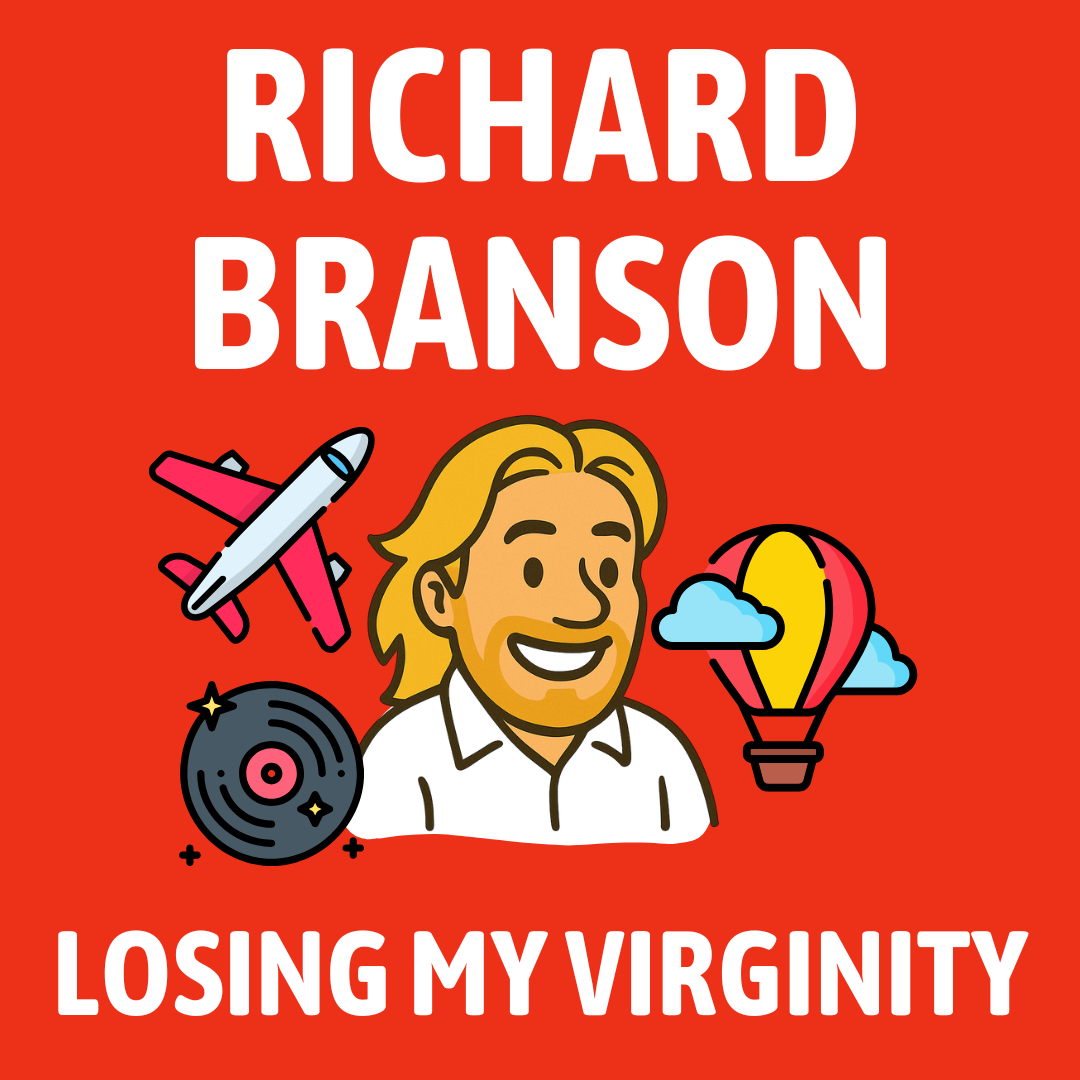
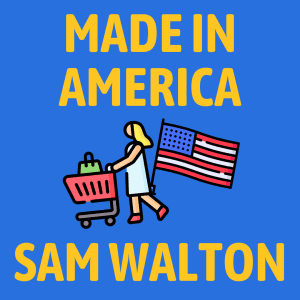
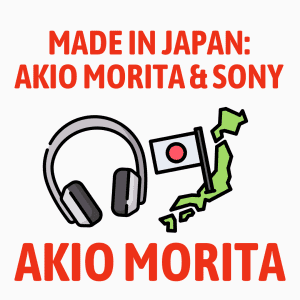

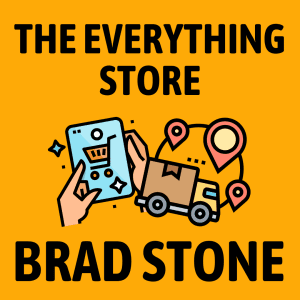
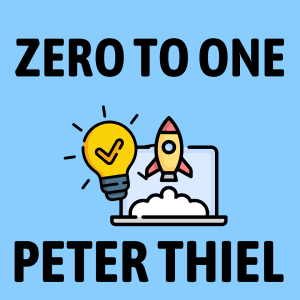
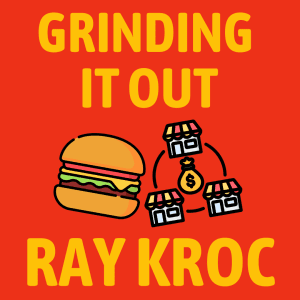
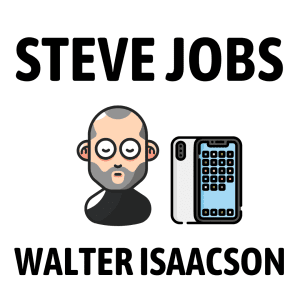







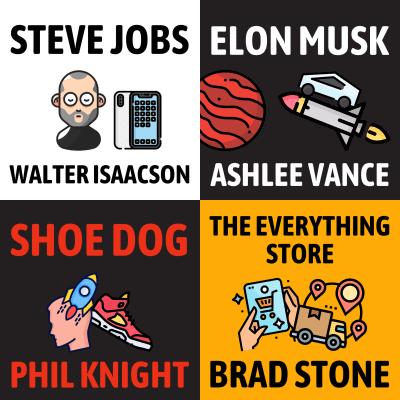
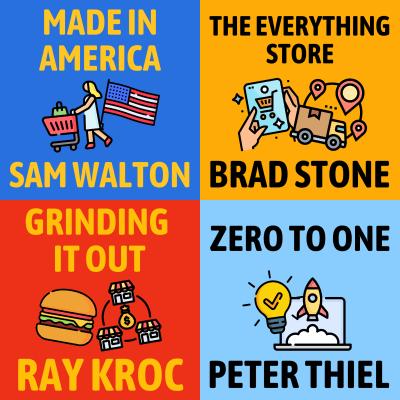
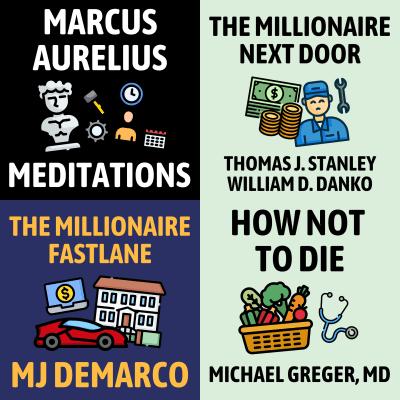













Community Notes